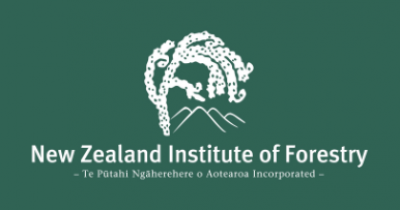1st November 2021 Newsletter
PRESIDENTS COLUMN

Hopefully you have all received an invite to the Special General Meeting scheduled for 4pm Wednesday 10 November. I encourage as many of you as possible to attend. If you have not registered with Raewyn, please do so at admin@nzif.org.nz. As this meeting has to be held on line, we will be asking members to vote by raising their hand in Zoom. If you are unsure how to do this please let us know ahead of time.
The purpose of the meeting is to decide whether NZIF would take on the role of registering forest advisors (not log traders) under the Bill which passed through government at the end of the last term. A key point for members to understand is this meeting will not be a debate on the Bill, this has already occurred and now we must make the best of it regardless of how we feel about the Bill.
At this stage there is no clarity around what registration will look like and who will need to be registered; though work is underway in this. We are wanting to know if members want NZIF to be involved in helping form the scheme and have input into who should be in it. Obviously NZIF has a large amount of IP on how to run such a scheme as we do so already. To date we have not been willing to share this IP unless we can see a benefit to do so.
MPI are seeking confirmation if we were offered delegation to run the scheme we would accept it. I am aware it is a bit of cart before the horse, but this clarity is required so MPI know who to work with on the formation of the scheme. If we choose not to accept delegation (if offered it) then MPI will most likely work with another organisation on the formation of the scheme and we will have little input.
So the major question we need to ask ourselves is would we want the scheme run by a non-forest entity (for example PWC or EY) or a forest entity, and if a forest entity who is best placed to run it.
If members do vote for NZIF accepting delegation (if offered it) then we will need to change our rules. However this meeting will not cover this as once again rule changes required wont be known until the formation of the scheme and how it is to be run is finalised. Therefore we will require another SGM to agree to the rule changes in 2022.
Please don’t hesitate to contact me if you have any questions before the SGM, either directly at President@nzif.org.nz, or via Raewyn (admin@nzif.org.nz). I look forward to seeing many of you on line in a couple of weeks.
Thanks
James
MEMBERS VOICE
Support for native forests
I was disappointed to see the Forest Owners Association making ‘apples with pears’ comparisons in their 15 October media release responding to the release of the government’s emissions reduction discussion document
the report is being realistic about the cost of planting indigenous trees. MfE states that establishing a hectare of native trees could cost up to $50,000 per hectare, whereas pine tree establishment costs up to $2,500 per hectare. Native trees are also much slower at storing appreciable amounts of carbon.
What the report (https://environment.govt.nz/assets/publications/Emissions-reduction-plan-discussion-document.pdf) actually said, in footnote 60 at the bottom of page 119 was:
The cost of establishing one hectare of native forest depends on the purpose and type of forest. Initial stocking rates can vary from 750 stems per hectare to 5000+. A native forest established through regeneration or planting may cost from around $1500 to $50,000 per hectare, the lower end based on pure mānuka planting rather than mixed native. Species selection, plant size, site preparation, fencing, supplementary planting and maintenance (including pest and weed control) can have significant impact on the costs of a successful forest (native and exotic). In comparison, planting radiata pine may cost from around $1500 to $2500 per hectare. Regional variation, including topography and access, can also have a significant impact.
On querying MfE I was told that the advice actually came from Te Uru Rakau.
So why did NZFOA only mention the highest cost for establishing native forest?
Tane’s Tree Trust, which probably has more information about establishing native forest than any other entity tells me costs
range from $5k to $40k per ha, the $5k relates to what the manuka honey industry indicate costs to establish manuka at 3m spacing (1100 spha) and the $40k relates to the cost of planting natives on difficult sites and/or planting PB2 or equivalent stock at high density (e.g., 4444 spha equivalent to 1.5m spacing) with multiple species, often used for riparian planting.
And that they:
often recommend a medium density of 3:1 or 4:1 mixed shrubs to trees to achieve a total stocking of 2500 spha. This brings the cost down to around $20,000 per ha on many sites
On the topic of growth rates for native forest, Tane’s Tree Trust advice was:
Basically, natives planted on reasonable sites with good management will grow twice as fast as the MPI Look-up tables indicate. The Look-up tables are based on regenerating shrubland over the first 50 years and our work on natural regeneration is in line with the tables, but the use of Look-up tables for estimating growth (and carbon) from planted stands is probably not very reliable. Regenerating shrublands have less carbon storage potential than taller forests. Radiata pine initially has a much higher rate of carbon sequestration, but after 20 years, several of our native species are capable of sequestering carbon at a similar rate and will continue to do so much longer than the comparatively short-lived radiata.
OK, it still costs more to establish native species than radiata, and they do initially grow slower. That shouldn’t be a surprise when you compare the research and development investment that has gone into radiata establishment, breeding, management etc., over the last few decades with the much smaller effort put into growing natives – and also considering that “natives” includes a whole range of different species, not just one.
I encourage all forestry professionals to have a look at the work Tane’s Tree Trust is doing (https://www.tanestrees.org.nz/) and to support and encourage that work.
Perhaps we should also think about the money being spent to control wilding conifers in various parts of the country and wonder what issues are going to arise in the future from some of the carbon forests being established while carbon prices are high but which might be walked away from when sequestration starts slowing and the owner might face liabilities for re-establishment if the stands are burnt or blown over.
For nearly three decades now, New Zealand’s main policy for climate change action has been to use the planting of new forest (particularly radiata) to offset emissions from other sources. We are told it creates a window while the country works out what to do to reduce those other emissions. The latest discussion document is still pretty weak on what we should do to reduce emissions instead of offsetting them by growing trees. How much longer can this holding position continue and how long will other countries tolerate this?
There has been public concern about the focus on the planting of pine trees. It is not just from some farming groups, but comes more generally from the public. It takes me back to the battles of the 1970s and 80s when there was a lot of opposition to the conversion of native forest to exotic plantation forest. I still remember a TV news item about the clearfelling of a stand of Hall’s Totara in Waituhi Forest at the south end of Pureora Forest west of Lake Taupo. It screened on Friday night on the eve of the 1985 Environmental Forum being held at Parliament over that weekend. The news was highlighted by several speakers at the Forum. Later that year, the government announced the NZ Forest Service would be disestablished. I believe it happened because the Forest Service and professional foresters were not listening to what the public was telling them but continued with the stance that “we know best”.
Let us not, in 2021, yet again ignore public opinion and continue to say that we know best and the only way NZ can meet its climate change commitments is to plant more and more pine trees. Let’s instead focus on the ways forest products can be used to replace or reduce the use of fossil fuels. Let us listen to the public who would rather see more native forest instead of pine forest, and engage in research to reduce the cost and increase the growth rates of native forest. Our profession needs to listen to the public and not just proclaim that the government in the 1980s got it wrong and “we really do know best”. Introduced conifer species have a place in NZ, but our unique native species, “nga rakau no te whenua” (the trees belonging to the whenua) have a right to be present, to be respected and protected.
Andrew McEwen
NZIF Registered Forester
(Declaration of interest – I am a member of Tane’s Tree Trust and I was a Trustee from 2007-12. I do not own or manage any forest, either native or introduced).
____________________________________________________________________________________________
Have your say!

Have something to say? comments? or just want to exchange idea's, then send an email to admin@nzif.org.nz
INSTITUTE NEWS
Special General Meeting
Special General Meeting (SGM) on Wednesday 10 November from 4-5pm via Zoom to decide if in principle NZIF would accepted the delegation of the functions of the Forestry Authority for forest advisors under the Forests (Regulation of Log Traders and Forestry Advisors) Amendment Act 2020.
FORESTRY EVENTS
Canterbury Local Section Christmas Dinner
Join us on Thursday 11th November for the 2021 NZIF Canterbury Christmas Function
Venue: Quality Hotel Elms - Fig Restaurant (Green Room)
Time: 6pm
Three course set menu: $55.50 per person.
After dinner presentation
Speaker: Mark Grover - Regional Manager - Rayonier Matariki Forests
Topic: Biofuel - Emerging opportunities for the forest owner
Please email your confirmation to Adrian Loo by Monday 8th November: adrianloo.nz@gmail.com
____________________________________________________________________________________________
Otago/Southland local section invites you to
Climate Impacts for Fire Management in the New Zealand Forest and Rural LandscapeMurray Dudfield FNZIF ONZM
The management of fire in the forest and rural landscape is both an art and a science. As a forestry professional what are the key elements and knowledge which then empowers us to contribute to the efficient and effective management of fire in the forest and rural landscape. Understanding the impacts of climate is one of the keys which is sometimes lost in this debate. The presentation by Murray will highlight the history of the key fire indicators for the past sixty years and look at projections out to 2040. In addition a number of future concerns will be outlined for a group discussion. Future decisions need to take account of the uncertainties and risks, and opportunities that may be the consequences of these decisions.
Date: 25th November 2021
Time: 4.30pm for drinks with the presentation starting at 5pm
Venue: Venue space at the Mornington Tavern, on the lower level at 36 Mailer St Mornington
RSVP: Raewyn at admin@nzif.org.nz by the 23rd Nov
____________________________________________________________________________________________
For further information Read more
___________________________________________________________________________________________
For further information Read more
NZIF Administrator
Email: NZIF Office
Mobile: +64 22 653 3750
NZIF Registration Board
Email: Registrations
Mobile: +64 27 463 1118
Complaints
Email: Complaints
Appeals
Email: Appeals
© All rights reserved. No part of this site may be reproduced, adapted, or distributed without prior written permission
We are a forum to exchange ideas, opinions and information about forestry.
We encourage and help our members attain and maintain the highest standards of their profession.




